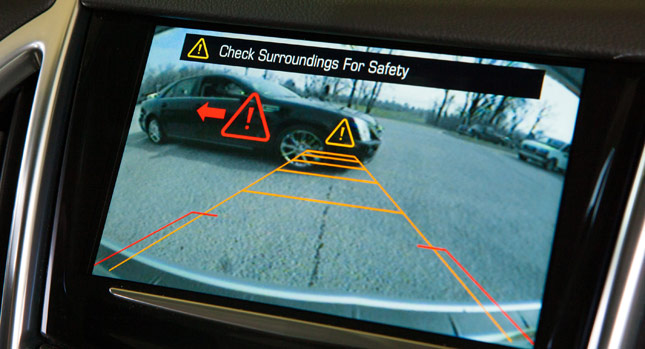After years of deliberation, federal safety regulators have issued a final rule that will require all new automobiles with a gross vehicle weight rating (GVWR) of under 10,000 pounds (~4,500 kg), including cars, buses, vans and trucks, to come equipped with back-up cameras as standard by May 2018.
The U.S. Department of Transportation’s National Highway Traffic Safety Administration (NHTSA) said the mandate is intended to prevent drivers from backing into pedestrians, with the feds stating that on average, there are 210 fatalities and 15,000 injuries per year caused by backover crashes. The agency said it expects around 58 to 69 lives to be saved each year once all vehicles are fitted with rear visibility systems that meet the new standards.
“Rear visibility requirements will save lives, and will save many families from the heartache suffered after these tragic incidents occur,” said NHTSA Acting Administrator David Friedman. “We’re already recommending this kind of life-saving technology through our NCAP program and encouraging consumers to consider it when buying cars today.”
Under the new rule, all vehicles manufactured on or after May 1, 2018, must be fitted with cameras that provide a 10-foot by 20-foot (approx. 3m x 6m) zone directly behind the car. Furthermore, NHTSA says the system “must also meet other requirements including image size, linger time, response time, durability, and deactivation”.
According to NHTSA’s estimates, the installation of a rear visibility system will cost approximately $43 to $45 for vehicles already equipped with a suitable display screen, and between $132 and $142 for all other vehicles.
The agency said it anticipates 73 percent of all new vehicles (under 10,000 pounds) will have a rear view camera by 2018 irrespective of the ruling.
“Accordingly, based on an annual new vehicle fleet of 16.0 million vehicles and considering the number of vehicles we anticipate will already have rear visibility systems by 2018, we believe the costs attributable to equipping the remaining 27% of vehicles (that are not projected to have rear visibility systems in 2018) will range from $546 to $620 million annually,” said NHTSA. “Those systems would also produce $265 to $396 million in monetized benefits.”
By John Halas
VIDEO







